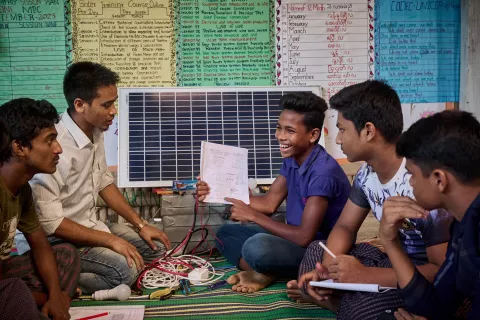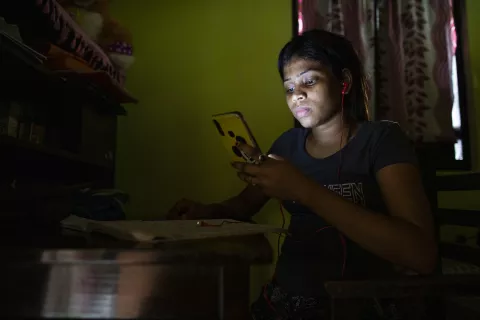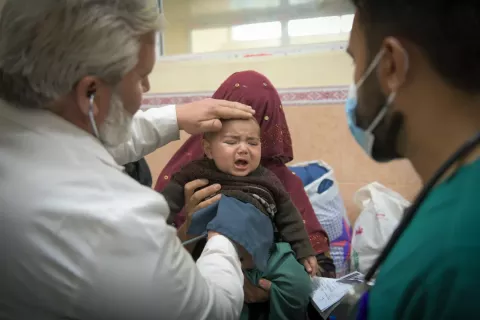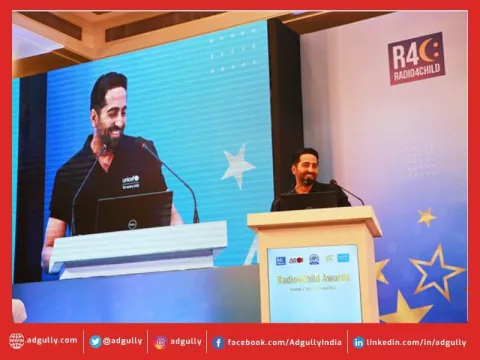Keeping all children learning during the pandemic

The COVID-19 pandemic continues to disrupt learning for over 434 million children in South Asia. While there have been partial school reopenings across all countries in the region except for Bangladesh, recurring surges of infections and lockdowns have led to new and prolonged school closures (see timeline below). South Asia faced a learning crisis even before COVID-19, with an estimated 58% of children unable to read a basic text by age 10 (Source). If not acted upon urgently, the future of many children will be further compromised.

The digital divide
The region has one of the lowest rates of household access to Internet, limiting opportunities for learning from home (Source). Maldives is the only country in the region where significantly more than half of the population has internet. In Afghanistan, Bangladesh and Pakistan, it is less than 30% by the most optimistic estimate (Source).
Acknowledging the digital divide, countries in the region have rolled out different distance learning approaches – mobile phone-based, textbooks and printed kits, TV, radio, and digital platforms. Research conducted by UNICEF in India, Pakistan and Sri Lanka show specific modalities were more successfully implemented in some countries than others. Learning through TV worked particularly well in Pakistan, while smartphones and basic phones were leveraged effectively in India. Children in Sri Lanka particularly benefited from textbooks and printed materials which were distributed at large scale. Nonetheless, learning during repeated school closures has proved challenging and has had a huge impact on the continuity of children’s learning. In South Asia, an estimated 147 million school children are unable to benefit from remote learning opportunities during school closures (Source). UNICEF surveys from the region have shown that many millions more had very limited learning opportunities and contact with teachers, even if they did have access to devices.
“I miss my school, my teachers and my friends,” says Dechen. “I understand the lessons better in school when our teachers explain; I don’t understand much when I watch it on TV.”

Addressing the digital divide - Essential Learning Packages
The digital divide and challenges associated with remote learning are unique for each country. It is simply impossible to pursue a ‘one size fits all’ approach with a universal package for all countries and children. Each country must develop and deliver tailored measures which reach all children and adolescents as quickly as possible, so that we can remediate existing and future learning loss. These series of tailored measures, or Essential Learning Packages, will ensure children and adolescents are able to continue learning under all circumstances.
The goal: Focus on tangible short-term measures to help children achieve targeted learning outcomes and help bridge to a full recovery in the longer term. While ministries may narrow the curriculum focus to fundamental subjects, psycho-social support for children must also be prioritized, whether in-person or remotely.
Teacher training and engagement will be essential to deliver the learning package. Trainings can also be delivered remotely and delivered and enhanced through technology.
Parents, guardians, care-givers and volunteers have played a critical role in keeping children learning. With budgets compromised in the short term and teachers over-stretched, volunteers, including unemployed school leavers and retired teachers should be encouraged to support.
Assessment is critical: Teachers need to be able to assess the level of their students and adapt teaching to their level, especially now that competency gaps between students in the same class have increased due to school closures. UNICEF South Asia is developing an online assessment platform to support this.
Supplies are also critical, and every child should have worksheets, textbooks and reading books appropriate to her or his level. Such materials also need to be digitized. For example, in India, initiatives by government (e.g., “Swayam”), Google (“Read Along” - also translated into the national languages of Bangladesh and Pakistan) and Pratham Books provide such materials for free provided students have a basic smartphone and Internet connectivity.
Leveraging mobile phones. From our research we see that smartphones, and even basic phones, played a central role in children’s education. The majority of households have a mobile phone and increasingly, these are smartphones. Teachers also need smartphones, internet and phone credit to continue teaching during school closures.
Distance learning approaches using devices need to take into account that students frequently share a device and may not be able to control when they have access. The sharing of mobile phones is very common within a household, for example, and sometimes also with neighbours and friends.
Communication: A well-rounded strategy will keep all key actors informed and engaged around the common cause – learning recovery. Our research indicates that better awareness raising on the opportunities for learning through various devices is needed, among learners, parents and caregivers, and teachers.
Integration: Learning modalities such as TV broadcasts, printed self-learning kits and teaching through mobile phones should not be rolled out as parallel, disconnected initiatives, but rather as a coherent package of interventions.
Adapted teaching approaches: Teachers need to adapt teaching practices according to their students’ differential access to devices and materials, for example reaching some via WhatsApp, others via phone and SMS, and ensuring the integration of the learning modalities they can access.
Inclusion: We must address issues such as language, gender and online safety. Our research on distance learning in India indicates that adolescent girls perceive themselves as learning less, which is partially due to more time spent on household chores compared to boys (Source). Training and guidance for school leaders, teachers, parents and caregivers will be critical to address these.
Monitoring: Schools and teachers need to
- identify appropriate devices and its accessibility for remote learning by students,
- check learning progress of every student,
- review teaching approaches and evaluate their reach and effectiveness at national and local levels.


Reimagining Education: a coherent approach to address immediate needs
Remote learning has not proven to be the panacea, or a viable alternative, to face-to-face schooling, but it has shown incredible promise as a complement to face-to-face teaching in future, and as an alternative for those who are unable to attend school. There is endless potential in reimagining education, but also many challenges to overcome, which can only be done in partnership.
Countries are already responding to this challenge. For example in Bhutan, UNICEF supported the education ministry to print the lessons broadcast on television into self-instructional materials and distribute them nationwide, so that children with no access to low-tech remote learning modalities can continue learning.
As the leading agency for children, UNICEF is committed to supporting governments in the eight South Asian countries to address the risks of learning loss and its potentially profound socio-political and economic impact on families, communities and societies. UNICEF is collaborating with national governments and other partners to develop contingency plans for future phases of the COVID-19 response to prevent learning loss. UNICEF is also supporting governments to budget and rollout essential learning packages to meet learning needs during continued school closures.
Urgent, pragmatic solutions which reach all children are required now. The same solutions can also bridge the gap between emergency efforts to build back better and indeed re-imagine education for future generations. Solutions need to build on what is currently available and build upon how children and youth in the region have been learning. Failure to act soon can be catastrophic and millions of children may never return back to learning.
The opportunities are immense, and the stakes have never been higher.





